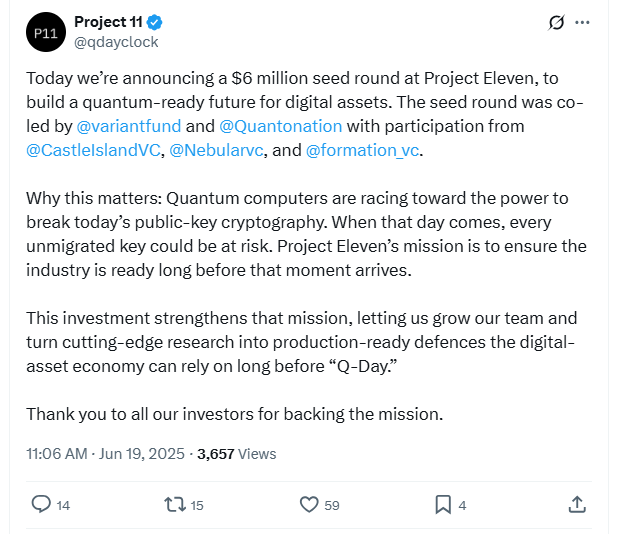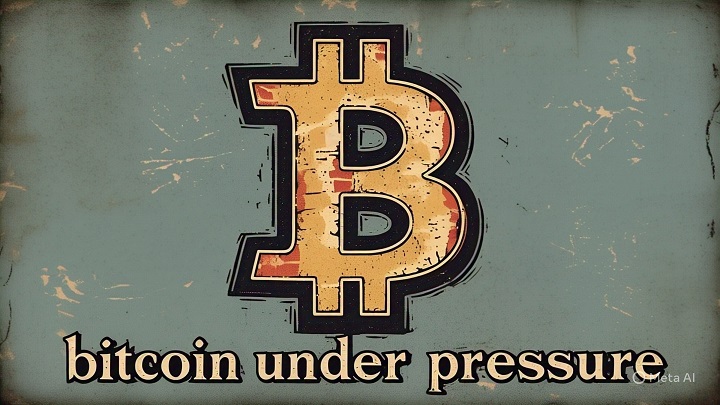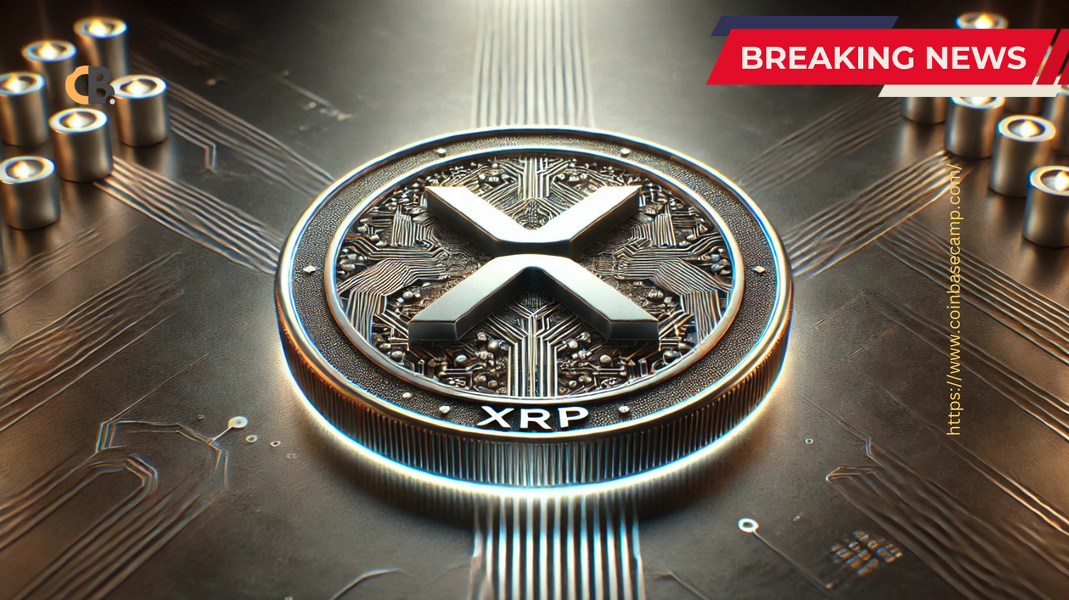Bitcoin has long been considered untouchable. It’s the most secure computing network in existence, backed by a global army of miners and bulletproof cryptography. But what happens when a new type of computer arrives—one powerful enough to break today’s encryption? That’s the question a new wave of technologists, researchers, and investors are trying to answer.
Key Takeaways;
Let’s explore how quantum computing could impact Bitcoin, what Project 11 is building.
How Quantum Computing Threatens Bitcoin’s Cryptography

For now, quantum computing feels like a distant concept—often discussed more in theory than in practice. But in reality, it’s progressing faster than many think.
Quantum computers work differently from traditional machines. Rather than using bits (ones and zeroes), they use quantum bits—or qubits—that can exist in multiple states simultaneously. This gives them the potential to process complex calculations exponentially faster than today’s most advanced supercomputers.
So why is this a problem for Bitcoin?
Because Bitcoin relies on cryptographic algorithms that, while virtually unbreakable by classical computers, may not hold up against a powerful enough quantum system. Specifically, Bitcoin uses the ECDSA (Elliptic Curve Digital Signature Algorithm) to secure wallets and verify transactions. A sufficiently advanced quantum computer could, in theory, reverse-engineer private keys from public ones—making wallets vulnerable to theft.
This threat isn’t imminent—but it’s real. IBM and Google are racing toward quantum breakthroughs, and government agencies are preparing defensive measures. Once quantum capability reaches a “cryptographically relevant” threshold, it could jeopardize the foundation of not only Bitcoin, but nearly every digital system we rely on today.
What Is Project 11 and How It Plans to Defend Bitcoin
In response to this looming risk, Project 11 has emerged with a mission: upgrade Bitcoin’s cryptography to become quantum-resistant.

The company just raised $6 million in seed funding to support its development. The round was co-led by Variant and Quantonation, with backing from notable crypto-focused firms like Castle Island Ventures, Nebular, and Formation.
According to Project 11’s statement, “Every wallet, every account holder, every smart contract key—all of it—must upgrade to new, quantum-safe cryptography.” Their team believes that quantum computing is no longer just a future threat—it’s a present concern that needs proactive solutions.
What makes Project 11 different is that it isn’t just building a theoretical model. Its goal is to create practical, deployable cryptographic upgrades that can be smoothly integrated into Bitcoin’s existing infrastructure—without disrupting the network’s integrity or decentralization.
While there’s no deadline for when these tools will be necessary, the urgency is clear: Bitcoin must modernize before the threat becomes real, not after.
Bitcoin Treasury Model Under Pressure: Debt Risks and Market Reactions

As Bitcoin evolves technologically, financial strategies tied to it are also being scrutinized.
One of the biggest trends in recent years has been the rise of Bitcoin treasury companies—firms that use corporate debt to purchase BTC as a strategic reserve asset. MicroStrategy, led by Michael Saylor, pioneered this model, amassing nearly $62 billion in Bitcoin through convertible debt offerings.
But not everyone sees this as a sustainable path.
Anthony Scaramucci, founder of SkyBridge Capital, recently warned that this strategy could backfire. Comparing it to fads like SPACs and high-risk financial engineering, Scaramucci said that issuing debt to buy Bitcoin might seem like a bold move now—but when the trend fades, it could “hurt Bitcoin.”
His concern is about perception. If companies that use debt to buy BTC are forced to sell during a downturn, it could send a shockwave through the market, undermining trust in Bitcoin’s long-term value.
Even VanEck’s head of digital assets research, Matthew Sigel, has flagged this issue. He warns that firms issuing equity at premiums to NAV (Net Asset Value) could erode shareholder value over time. If their share prices fall or fail to reflect the value of their Bitcoin, further issuance could dilute investor equity.
This is more than financial strategy—it’s a reputational risk for Bitcoin. As the asset becomes more institutional, the behavior of corporate holders will influence how markets and regulators view it.
BTCFi Is Evolving: How Bitcoin’s Role Is Shifting from Digital Gold to Financial Infrastructure

For years, Bitcoin was described as “digital gold”—a static store of value, not something that actively worked within the financial system.
But that narrative is changing fast.
Welcome to BTCFi, a new wave of financial products and platforms built directly on Bitcoin’s infrastructure. These innovations extend Bitcoin’s functionality into decentralized finance (DeFi), creating a world where BTC isn’t just held—it’s used.
Examples of BTCFi include:
- Babylon Protocol, which allows native Bitcoin staking
- Rootstock, an EVM-compatible Bitcoin sidechain with smart contract support
- Stacks, a layer-2 platform that brings Web3 to Bitcoin
- Taproot Assets, enabling tokenization directly on the Bitcoin blockchain
In the first quarter of 2025, Rootstock saw a significant increase in mining participation and network security. Meanwhile, Binance reported that the total value locked in Bitcoin-based DeFi projects surged over 2,700% year-over-year.
These developments mark a profound shift. Bitcoin is no longer just a passive asset—it’s becoming a foundational layer for a growing financial ecosystem.
Kraken’s Babylon Partnership: A New Era of Bitcoin Staking

One of the most recent breakthroughs in BTCFi came from Kraken, one of the world’s top crypto exchanges. Kraken has integrated with the Babylon protocol to launch Bitcoin staking, allowing users to earn rewards without bridging, wrapping, or lending their BTC.
Here’s how it works:
- Users can stake their Bitcoin directly on-chain using time-locked scripts.
- The BTC remains under user control and is used to help secure Proof-of-Stake (PoS) blockchains.
- Instead of earning interest in Bitcoin, users receive BABY tokens, which can be used for governance or transaction fees.
This model opens up a new form of yield generation for long-term BTC holders who previously had to choose between security and utility.
Mark Greenberg, Kraken’s global head of consumer, put it best: “A substantial amount of Bitcoin currently sits idle. This integration gives it purpose.”
Digital Gold or Digital Property? The Debate Shaping Bitcoin’s Future
At the heart of many Bitcoin debates is a philosophical divide: Is Bitcoin just a better version of gold, or is it something much more?
Michael Saylor says Bitcoin is digital property, and believes its potential value could reach $500 trillion—putting it on par with all global real estate and financial assets.
Anthony Scaramucci takes a more conservative stance, calling Bitcoin digital gold, and estimating its total value ceiling around $24 to $25 trillion.
Both views reflect a belief in Bitcoin’s durability, but they lead to different strategies. If Bitcoin is gold, it’s meant to be held and preserved. If it’s property, it can be leveraged, borrowed against, or even programmed into applications—just like physical infrastructure.
This distinction matters. It shapes how investors approach Bitcoin, how regulators treat it, and how developers build on it. As BTCFi grows, the “digital property” thesis may gain ground—but not without pushback from those who prefer Bitcoin’s original simplicity.
Can Bitcoin Survive Technological Shifts and Market Corrections?

Bitcoin has survived more than a dozen major crashes, regulatory crackdowns, and public skepticism. It’s faced bugs, forks, energy criticism, and even outright bans. Yet, it remains the most valuable and resilient digital asset in the world.
Now, the next set of challenges is more nuanced—and more existential.
- Technological risk from quantum computing could challenge Bitcoin’s foundational cryptography.
- Strategic risks from corporate behavior could distort its image as a decentralized, trustless currency.
- Market risks from speculative hype cycles could rattle public confidence.
But Bitcoin has one key advantage: a global, highly engaged community of developers, investors, and thinkers who actively work to fix problems before they break the system.
Project 11 is one such example. So are the developers building BTCFi. So are exchanges like Kraken that are expanding Bitcoin’s utility.
Bitcoin doesn’t need to stay the same to stay valuable—it needs to adapt without compromising its core.
And right now, that’s exactly what we’re starting to see.
Conclusion
Bitcoin’s future is no longer just about price speculation. It’s about resilience—technological, financial, and philosophical.
As quantum computing advances, as new financial strategies emerge, and as BTCFi redefines how Bitcoin works in practice, one thing becomes clear:
The Bitcoin network is entering a new era—one where survival depends not just on code, but on collaboration, innovation, and trust.
Latest Crypto News;
- Crypto News Flash: Metaplanet Surpasses Coinbase, Strategy Hints at More Bitcoin Buys
- Is it a Crash or DIP? Bitcoin Rebound, Dogecoin Nosedive and Solana ETF
- Bitcoin Slumps, Ethereum’s $1B Play, and the SEC’s New Stance
- How Wall Street, Germany, and GameStop Are Changing the Rules?
- Ethereum’s $110B DeFi Surge, Bullish and Gemini IPOs
- Paraguay Hack, Circle IPO Boom, and Hong Kong’s Chainlink CBDC Pilot
- Why Michael Saylor Is Betting Big on Bitcoin
- Billionaire’s Conflict Shake-Up and Wake-Up the Crypto Market
- Bitcoin News: Trump vs Musk, Tesla Crash, Circle IPO
- Bitcoin News: JPMorgan, MoonPay, and K-Wave Drive BTC Adoption
- Why Ethereum Is Attracting More Institutional Capital
- Bitcoin Hits New All-Time High: What’s Next?
- How High Can Bitcoin Go in 2025?
- Ripple to Unlock 1 Billion XRP in June 2025














